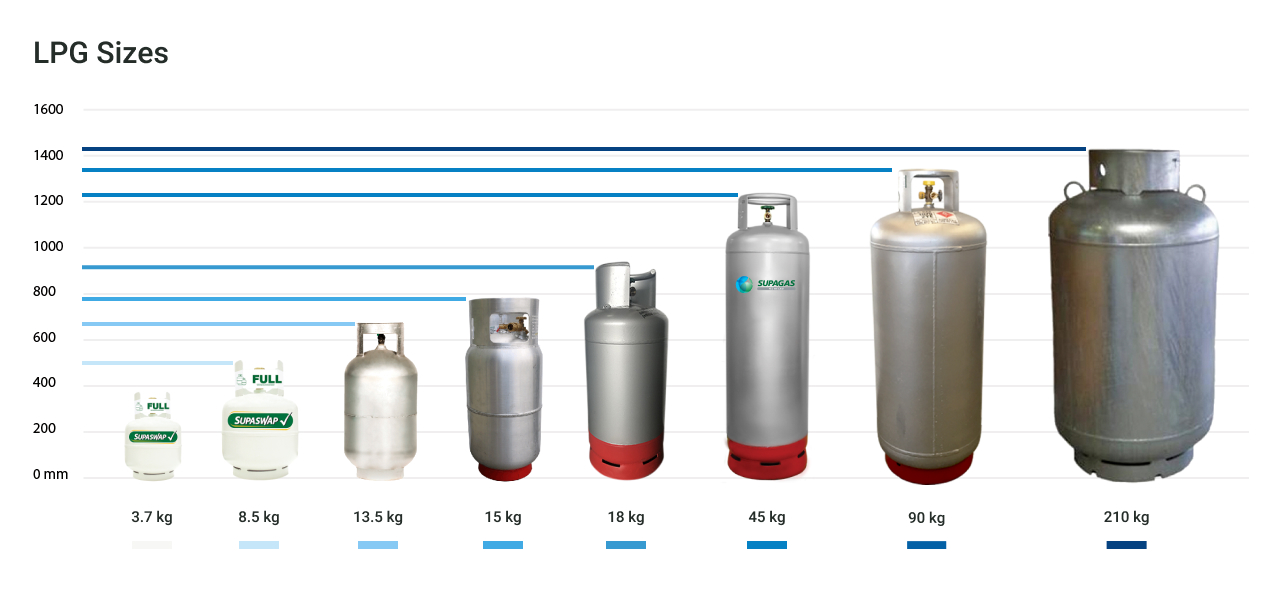Gas Truck Driving Jobs: Fueling Your Career Path
Gas Truck Driving Jobs: Fueling Your Career Path cars.truckstrend.com
The roar of an engine, the open road, and the vital task of delivering the lifeblood of modern society – these are the hallmarks of a gas truck driving job. Far more than just hauling cargo, gas truck driving is a specialized, highly responsible, and critically important profession that keeps our vehicles moving, our homes warm, and our industries humming. This comprehensive guide delves into the world of gas truck driving jobs, exploring everything from the daily responsibilities to the lucrative benefits and stringent requirements, offering a clear roadmap for anyone considering this dynamic career.
What Exactly is a Gas Truck Driver?
Gas Truck Driving Jobs: Fueling Your Career Path
At its core, a gas truck driver, often referred to as a fuel hauler or tanker driver, is responsible for the safe transportation of various flammable liquids and gases. This primarily includes gasoline, diesel fuel, propane, natural gas, and sometimes aviation fuel, from distribution terminals to gas stations, commercial businesses, industrial sites, and even residential areas.
Unlike general freight trucking, this role demands an exceptional level of precision, adherence to safety protocols, and specialized knowledge due to the volatile nature of the cargo. Drivers operate highly specialized tanker trucks, categorized by their design and the products they carry (e.g., MC 306/406 for flammable liquids, MC 331 for compressed gases). Their responsibilities extend beyond just driving; they are intimately involved in:
- Pre-trip and Post-trip Inspections: Thoroughly checking the vehicle, tank, hoses, and safety equipment.
- Loading Procedures: Safely connecting hoses, monitoring product flow, and ensuring correct fill levels at terminals. This often involves vapor recovery systems and grounding procedures to prevent static electricity.
- Transport: Navigating routes, often in urban and congested areas, while adhering to strict speed limits and hazardous materials regulations.
- Unloading Procedures: Safely delivering fuel to customer tanks, which involves precise maneuvering, connecting hoses, monitoring the transfer, and ensuring environmental compliance.
- Documentation: Completing bills of lading, delivery receipts, and maintaining accurate logs.
- Emergency Preparedness: Knowing how to respond to spills or other incidents, though prevention is paramount.

This is a role where vigilance, attention to detail, and an unwavering commitment to safety are not just preferred traits but absolute necessities.
The Demand and Job Outlook for Gas Truck Drivers
The demand for gas truck drivers remains consistently strong and is projected to grow. Fuel is an indispensable commodity; every car, truck, airplane, and many homes and businesses rely on it. This creates a perpetual need for skilled drivers to transport it. Several factors contribute to the positive job outlook:

- Essential Service: Fuel transport is a critical infrastructure service, meaning demand is less susceptible to economic fluctuations compared to other industries.
- Aging Workforce: A significant portion of the current driving workforce is nearing retirement, creating numerous openings for new drivers.
- Specialized Skill Set: The requirement for HazMat and Tanker endorsements, combined with the inherent responsibility, means fewer drivers qualify for these positions, leading to less competition for those who do.

For individuals seeking a stable career with high job security, gas truck driving presents an excellent opportunity.
Benefits of a Career in Gas Truck Driving
Beyond job security, a career in gas truck driving offers a compelling suite of benefits that often surpass those of general freight trucking:
- High Earning Potential: Due to the specialized nature, high responsibility, and critical importance of the cargo, gas truck drivers typically command higher salaries than many other CDL holders. Experienced drivers can earn six-figure incomes.
- Job Security: As an essential service, the demand for fuel haulers is constant, offering robust employment stability.
- Home Daily or Regional Routes: Many gas hauling jobs involve local or regional routes, allowing drivers to be home daily or every few nights, a significant advantage over long-haul OTR (Over-The-Road) positions. This improves work-life balance.
- Specialized Skill Set: Developing expertise in fuel transport makes you a valuable asset in the industry, often leading to better benefits and career advancement opportunities.
- Comprehensive Benefits Packages: Most reputable fuel carriers offer excellent benefits, including health, dental, and vision insurance, 401(k) plans, paid time off, and life insurance.
- Independent Work Environment: While interacting with dispatch and customers, much of the job involves independent work on the road, appealing to those who prefer autonomy.
Essential Requirements and Qualifications
Becoming a gas truck driver requires meeting stringent federal and state regulations, as well as company-specific criteria. Here’s a breakdown of the core requirements:
- Commercial Driver’s License (CDL) Class A: This is the foundational requirement for operating heavy-duty trucks.
- Hazardous Materials (HazMat) Endorsement (H): Absolutely non-negotiable. This endorsement requires a federal background check (TSA Security Threat Assessment) and a written knowledge test demonstrating understanding of HazMat regulations.
- Tanker Endorsement (N): Also critical. This requires a written test proving knowledge of operating tank vehicles and managing liquid surge.
- TWIC Card (Transportation Worker Identification Credential): Often required for access to secure facilities like fuel terminals and ports. This also involves a background check.
- Clean Driving Record: A history free of major accidents, serious traffic violations, or DUIs is crucial for insurability and employment.
- DOT Physical Examination: Drivers must pass a physical exam administered by a certified medical examiner to ensure they are fit for duty.
- Drug and Alcohol Testing: Pre-employment, random, post-accident, and reasonable suspicion drug and alcohol tests are mandatory under DOT regulations.
- Age Requirement: Must be at least 21 years old to transport hazardous materials across state lines (interstate commerce). Some companies may hire at 18 for intrastate routes.
- Experience: While some companies offer entry-level positions and training, many prefer candidates with at least 1-2 years of commercial driving experience.
- Strong Work Ethic and Safety Focus: Employers seek reliable individuals with an unwavering commitment to safety protocols.
The Day-to-Day Life of a Gas Truck Driver
A typical day for a gas truck driver is dynamic and demanding, varying based on the company, route, and type of fuel being hauled.
- Morning Briefing & Pre-Trip: The day often begins early at the terminal, where drivers receive their dispatch orders, review routes, and conduct a meticulous pre-trip inspection of their truck and trailer. This includes checking tires, brakes, lights, fluid levels, and all safety equipment, ensuring the tanker is clean and ready for the specific product.
- Loading: Drivers proceed to the fuel terminal or refinery for loading. This is a highly controlled process where drivers connect hoses, ground the tanker, and monitor the loading process, ensuring the correct product and quantity are loaded safely.
- On the Road: The core of the job involves driving. Drivers navigate often busy highways and local roads, adhering to speed limits and specific routing requirements for hazardous materials. Defensive driving is paramount.
- Unloading: Upon arrival at a gas station or customer site, the driver meticulously positions the truck, connects hoses, and safely unloads the fuel into the designated storage tanks. This involves checking tank levels, preventing spills, and ensuring precise delivery.
- Paperwork & Post-Trip: After delivery, drivers complete necessary paperwork, including delivery receipts and logbooks. Back at the terminal, a post-trip inspection is performed, and any maintenance issues are reported.
Shifts can vary significantly, including day, night, and weekend work, as fuel delivery is a 24/7 operation.
Challenges and How to Overcome Them
While rewarding, gas truck driving presents its unique set of challenges:
- High Responsibility & Safety Criticality: The potential for catastrophic incidents if safety protocols are not followed is immense.
- Solution: Continuous training, unwavering adherence to company and federal regulations, and a meticulous, safety-first mindset.
- Strict Regulations and Compliance: The industry is heavily regulated, with rules constantly evolving.
- Solution: Stay informed through company training programs, industry updates, and personal commitment to learning.
- Physical Demands: Connecting hoses, climbing on tanks, and navigating tight spaces can be physically taxing.
- Solution: Maintain physical fitness, use proper lifting techniques, and ensure adequate rest.
- Unpredictable Schedules: Night shifts, early mornings, and weekend work are common, impacting personal life.
- Solution: Strong time management, open communication with family, and adaptability.
- Traffic and Weather: Like all truck drivers, fuel haulers contend with adverse weather conditions and congested traffic.
- Solution: Advanced defensive driving skills, patience, and effective trip planning.
Tips for Aspiring Gas Truck Drivers
If you’re considering a career in fuel hauling, here are some practical tips:
- Get Your Endorsements Early: Don’t wait. Obtain your HazMat (H) and Tanker (N) endorsements as soon as possible after getting your Class A CDL.
- Gain General CDL Experience: If you’re a new CDL holder, consider getting a year or two of general freight experience first. This builds your driving skills and makes you more attractive to fuel carriers.
- Network: Talk to current gas truck drivers. They can offer invaluable insights into the job, company cultures, and potential openings.
- Research Companies Thoroughly: Look for companies with excellent safety records, strong training programs, and competitive pay and benefits. Read reviews from current and former employees.
- Emphasize Safety: In interviews, highlight your commitment to safety, attention to detail, and ability to follow strict protocols.
- Be Prepared for Background Checks: The security clearances for HazMat and TWIC are extensive. Ensure your record is clean.
- Maintain Physical Fitness: The job requires climbing, lifting, and prolonged periods of sitting. Staying fit will help you perform better and reduce injury risk.
Estimated Earning Potential for Gas Truck Drivers
The earning potential for gas truck drivers is one of the most attractive aspects of the job, often significantly higher than general freight hauling due to the specialized skills and responsibility involved.
| Experience Level / Category | Average Annual Salary Range | Average Hourly Wage Range | Notes |
| :————————– | :————————– | :———————— | :——————————————————————————————————————————————————————————————————————————————————————————————————————————————————————————————————————————————————————————————————————————————————————————————————————————————————————————————————————————————————————————————————————————————————————————————————————————————————————————————————————————————————————————————————————————————————————————————————————————————————————————————————————————————————————————————————————————————————————————————————————————————————————————————————————————————————————————————————————————————————————————————————————————————————————————————————————————————————————————————————————————————————————————————————————————————————————————————————————————————————————————————————————————————————————————————————————————————————————————————————————————————————————————————————————————————————————————————————————————————————————————————————————————————————————————————————————————————————————————————————————————————————————————————————————————————————————————————————————————————————————————————————————————————————————————————————————————————————————————————————————————————————————————————————————————————————————————————————————————————————————————————————————————————————————————————————————————————————————————————————————————————————————————————————————————————————————————————————————————————————————————————————————————————————————————————————————————————————————————————————————————————————————————————————————————————————————————————————————————————————————————————————————————————————————————————————————————————————————————————————————————————————————————————————————————————————————————————————————————————————————————————————————————————————————————————————————————————————————————————————————————————————————————————————————————————————————————————————————————————————————————————————————————————————————————————————————————————————————————————————————————————————————————————————————————————————————————————————————————————————————————————————————————————————————————————————————————————————————————————————————————————————————————————————————————————————————————————————————————————————————————————————————————————————————————————————————————————————————————————————————————————————————————————————————————————————————————————————————————————————————————————————————————————————————————————————————————————————————————————————————————————————————————————————————————————————————————————————————————————————————————————————————————————————————————————————————————————————————————————————————————————————————————————————————————————————————————————————————————————————————————————————————————————————————————————————————————————————————————————————————————————————————————————————————————————————————————————————————————————————————————————————————————————————————————————————————————————————————————————————————————————————————————————————————————————————————————————————————————————————————————————————————————————————————————————————————————————————————————————————————————————————————————————————————————————————————————————————————————————————————————————————————————————————————————————————————————————————————————————————————————————————————————————————————————————————————————————————————————————————————————————————————————————————————————————————————————————————————————————————————————————————————————————————————————————————————————————————————————————————————————————————————————————————————————————————————————————————————————————————————————————————————————————————————————————————————————————————————————————————————————————————————————————————————————————————————————————————————————————————————————————————————————————————————————————————————————————————————————————————————————————————————————————————————————————————————————————————————————————————————————————————————————————————————————————————————————————————————————————————————————————————————————————————————————————————————————————————————————————————————————————————————————————————————————————————————————————————————————————————————————————————————————————————————————————————————————————————————————————————————————————————————————————————————————————————————————————————————————————————————————————————————————————————————————————————————————————————————————————————————————————————————————————————————————————————————————————————————————————————————————————————————————————————————————————————————————————————————————————————————————————————————————————————————————————————————————————————————————————————————————————————————————————————————————————————————————————————————————————————————————————————————————————————————————————————————————————————————————————————————————————————————————————————————————————————————————————————————————————————————————————————————————————————————————————————————————————————————————————————————————————————————————————————————————————————————————————————————————————————————————————————————————————————————————————————————————————————————————————————————————————————————————————————————————————————————————————————————————————————————————————————————————————————————————————————————————————————————————————————————————————————————————————————————————————————————————————————————————————————————————————————————————————————————————————————————————————————————————————————————————————————————————————————————————————————————————————————————————————————————————————————————————————————————————————————————————————————————————————————————————————————————————————————————————————————————————————————————————————————————————————————————————————————————————————————————————————————————————————————————————————————————————————————————————————————————————————————————————————————————————————————————————————————————————————————————————————————————————————————————————————————————————————————————————————————————————————————————————————————————————————————————————————————————————————————————————————————————————————————————————————————————————————————————————————————————————————————————————————————————————————————————————————————————————————————————————————————————————————————————————————————————————————————————————————————————————————————————————————————————————————————————————————————————————————————————————————————————————————————————————————————————————————————————————————————————————————————————————————————————————————————————————————————————————————————————————————————————————————————————————————————————————————————————————————————————————————————————————————————————————————————————————————————————————————————————————————————————————————————————————————————————————————————————————————————————————————————————————————————————————————————————————————————————————————————————————————————————————————————————————————————————————————————————————————————————————————————————————————————————————————————————————————————————————————————————————————————————————————————————————————————————————————————————————————————————————————————————————————————————————————————————————————————————————————————————————————————————————————————————————————————————————————————————————————————————————————————————————————————————————————————————————————————————————————————————————————————————————————————————————————————————————————————————————————————————————————————————————————————————————————————————————————————————————————————————————————————————————————————————————————————————————————————————————————————————————————————————————————————————————————————————————————————————————————————————————————————————————————————————————————————————————————————————————————————————————————————————————————————————————————————————————————————————————————————————————————————————————————————————————————————————————————————————————————————————————————————————————————————————————————————————————————————————————————————————————————————————————————————————————————————————————————————————————————————————————————————————————————————————————————————————————————————————————————————————————————————————————————————————————————————————————————————————————————————————————————————————————————————————————————————————————————————————————————————————————————————————————————————————————————————————————————————————————————————————————————————————————————————————————————————————————————————————————————————————————————————————————————————————————————————————————————————————————————————————————————————————————————————————————————————————————————————————————————————————————————————————————————————————————————————————————————————————————————————————————————————————————————————————————————————————————————————————————————————————————————————————————————————————————————————————————————————————————————————————————————————————————————————————————————————————————————————————————————————————————————————————————————————————————————————————————————————————————————————————————————————————————————————————————————————————————————————————————————————————————————————————————————————————————————————————————————————————————————————————————————————————————————————————————————————————————————————————————————————————————————————————————————————————————————————————————————————————————————————————————————————————————————————————————————————————————————————————————————————————————————————————————————————————————————————————————————————————————————————————————————————————————————————————————————————————————————————————————————————————————————————————————————————————————————————————————————————————————————————————————————————————————————————————————————————————————————————————————————————————————————————————————————————————————————————————————————————————————————————————————————————————————————————————————————————————————————————————————————————————————————————————————————————————————————————————————————————————————————————————————————————————————————————————————————————————————————————————————————————————————————————————————————————————————————————————————————————————————————————————————————————————————————————————————————————————————————————————————————————————————————————————————————————————————————————————————————————————————————————————————————————————————————————————————————————————————————————————————————————————————————————————————————————————————————————————————————————————————————————————————————————————————————————————————————————————————————————————————————————————————————————————————————————————————————————————————————————————————————————————————————————————————————————————————————————————————————————————————————————————————————————————————————————————————————————————————————————————————————————————————————————————————————————————————————————————————————————————————————————————————————————————————————————————————————————————————————————————————————————————————————————————————————————————————————————————————————————————————————————————————————————————————————————————————————————————————————————————————————————————————————————————————————————————————————————————————————————————————————————————————————————————————————————————————————————————————————————————————————————————————————————————————————————————————————————————————————————————————————————————————————————————————————————————————————————————————————————————————————————————————————————————————————————————————————————————————————————————————————————————————————————————————————————————————————————————————————————————————————————————————————————————————————————————————————————————————————————————————————————————————————————————————————————————————————————————————————————————————————————————————————————————————————————————————————————————————————————————————————————————————————————————————————————————————————————————————————————————————————————————————————————————————————————————————————————————————————————————————————————————————————————————————————————————————————————————————————————————————————————————————————————————————————————————————————————————————————————————————————————————————————————————————————————————————————————————————————————————————————————————————————————————————————————————————————————————————————————————————————————————————————————————————————————————————————————————————————————————————————————————————————————————————————————————————————————————————————————————————————————————————————————————————————————————————————————————————————————————————————————————————————————————————————————————————————————————————————————————————————————————————————————————————————————————————————————————————————————————————————————————————————————————————————————————————————————————————————————————————————————————————————————————————————————————————————————————————————————————————————————————————————————————————————————————————————————————————————————————————————————————————————————————————————————————————————————————————————————————————————————————————————————————————————————————————————————————————————————————————————————————————– | Data Source: Bureau of Labor Statistics (BLS), Glassdoor, Salary.com (Ranges are illustrative and depend on location, company, and individual experience). |
| Entry-Level Driver (0-1 year) | $55,000 – $70,000 | $25 – $35 | New CDL holder with HazMat/Tanker endorsements; may include paid training period. |
| Experienced Driver (1-5 years) | $70,000 – $90,000 | $35 – $45 | Solid experience in fuel hauling, proven safety record. |
| Senior/Specialized Driver (5+ years) | $90,000 – $120,000+ | $45 – $60+ | Extensive experience, possibly hauling specialized fuels (e.g., aviation fuel, LNG) or working critical routes. |
| Average National Salary | ~$75,000 – $85,000 | ~$38 – $42 | General average for a gas truck driver in the U.S. |
| Top Earners (Specific Regions/Companies) | Up to $150,000+ | Up to $70+ | Highly experienced drivers, working long hours, specialized routes, or for top-paying companies in high-demand areas. |
Note: These figures are estimates and can vary significantly based on factors such as location (cost of living, regional demand), company size and type (private fleet vs. common carrier), benefits package value, overtime hours, and the specific type of fuel being transported.
Frequently Asked Questions (FAQ)
Q1: Is the HazMat endorsement difficult to get?
A1: The HazMat endorsement requires a written test and a federal background check (TSA Security Threat Assessment). The test covers regulations for transporting hazardous materials, placards, and emergency procedures. While it requires studying, it’s manageable for anyone committed to learning the material. The background check can take several weeks.
Q2: Do I need experience to become a gas truck driver?
A2: Many companies prefer at least 1-2 years of general Class A CDL experience before hiring for fuel hauling due to the high responsibility. However, some larger carriers or regional companies offer entry-level programs or paid training for new CDL holders who have their HazMat and Tanker endorsements.
Q3: What’s the typical work schedule for a gas truck driver?
A3: Schedules vary greatly. Many positions are local or regional, meaning drivers are home daily or every few nights. However, fuel delivery is a 24/7 operation, so drivers often work nights, weekends, and holidays. Shifts can be 10-14 hours long, adhering to strict Hours of Service regulations.
Q4: Is gas truck driving dangerous?
A4: While transporting hazardous materials inherently carries risks, the industry is incredibly safety-focused. With proper training, strict adherence to protocols, and constant vigilance, the job is very safe. Drivers are extensively trained in emergency procedures and spill prevention. The biggest dangers come from complacency or negligence.
Q5: How long does it take to become qualified as a gas truck driver?
A5: It typically takes 3-6 months to get your Class A CDL. Obtaining the HazMat and Tanker endorsements can add a few weeks (for study and background checks). If you need 1-2 years of general trucking experience, the total path to becoming a fuel hauler could be 1.5 to 2.5 years.
Q6: What’s the difference between hauling gasoline and propane/natural gas?
A6: While both involve hazardous materials, there are key differences. Gasoline and diesel are liquid fuels hauled in MC 306/406 non-pressure or low-pressure tanks. Propane (LPG) and natural gas (LNG/CNG) are compressed gases, requiring specialized MC 331 high-pressure tanks and different handling procedures (e.g., cryogenic for LNG). The principles of safety are similar, but the equipment and specific protocols differ.
Conclusion
Gas truck driving jobs offer a robust and rewarding career path for individuals seeking stability, high earning potential, and a vital role in the nation’s infrastructure. It’s a profession that demands respect, responsibility, and an unwavering commitment to safety. While the requirements are stringent and the challenges real, the benefits – including excellent pay, job security, and often being home daily – make it an incredibly attractive option for the right individual. If you possess a strong work ethic, attention to detail, and a desire to be at the forefront of a critical industry, fueling a career as a gas truck driver could be your next strategic move.






